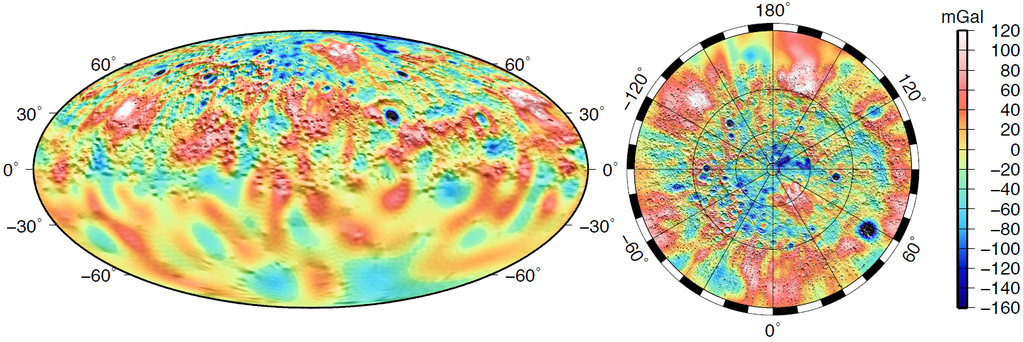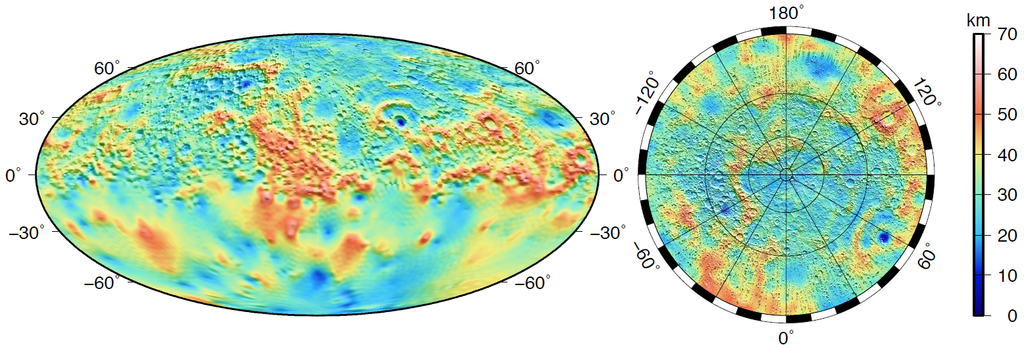
The Solid Heart of Mercury has Been Discovered: the Internal Structure is Similar to the Earth's
Mercury and the Earth are more alike than believed. Although the dimensions are very different and Mercury is one third of our planet, the two deep interior structures are similar: they both have an external core of liquid metal and a solid inner core.
This is what emerges from the study coordinated by Antonio Genova of the Sapienza Department of Mechanical and Aerospace Engineering and conducted at the NASA Goddard Space FIight Center. Until now, it was known only that Mercury’s core represents about 85% of the total volume of the planet and part of it is fluid, but the true nature of the deep interior remained unknown.
The data from the NASA MESSENGER mission, published in the journal Geophysical Research Letters, enabled the retrieval of the composition and internal structure of this planet. The MESSENGER probe, which flew over the northern hemisphere at altitudes of 200 km in the first three years and 15-25 in the last year, orbited the planet from March 2011 until April 2015, measuring the two parameters recognized by researchers as fundamental to go back to the properties and sizes of the fluid and solid core: rotation and gravity.
Each planet rotates around an axis, the pole. Mercury with respect to the Earth rotates much more slowly, with a day that equals about 58 Earth’s days. The variations of this parameter have often been used in the past to reveal clues about the internal structure of the planet: in 2007, small deviations in the rotation of Mercury, called librations, were detected demonstrating that the part of the core is molten.
The mere observation of the rotation, however, was not sufficient to have a better understanding of the innermost part. Genova and his team then measured how the space probe accelerated under the influence of Mercury's gravity at each orbit thus leading to constrain the orientation of Mercury’s pole.
Analyzing the data of rotation and gravitational attraction, the researchers showed that the planet has a large and solid internal heart. In particular, they estimated that the solid iron part (~ 1000 km) represents about 50% of the whole core (~ 2000 km), making it similar to that of the Earth (~ 1200 km) which instead corresponds to 35% of the total.
“Such an advanced solidification of the core,” explains Antonio Genova, “demonstrates how the deepest part of Mercury is similar to that of the Earth: understanding the nature and evolution of the internal structure of other planets is essential to enhance our knowledge of Earth’s future.”
The story of Antonio Genova is that of a young researcher who went to the United States in 2013 and is now back in our country: once he finished his Ph.D. at the Sapienza Department of Mechanical and Aerospace Engineering he moved to the United States, obtaining a contract from MIT and continuing his research activity at NASA's Goddard Space FIight Center in Greenbelt, with a focus on planetary exploration of the planets Mars and Mercury. In January 2019 he started a new position as Assistant Professor at our University after being awarded by the Ministerial Program for Young Researchers Rita Levi Montalcini.
References:
Geodetic evidence that Mercury has a solid inner core - Genova, A., Goossens, S., Mazarico, E., Lemoine, F. G., Neumann, G. A., Kuang, W., Sabaka, T. J., Hauck, S. A., II, David E. Smith, Sean C. Solomon & Zuber, M. T. - Geophysical Research Letters 2019
DOI: https://doi.org/10.1029/2018GL081135
Further Information
Antonio Genova
Department of Mechanical and Aerospace Engineering, Sapienza University of Rome
antonio.genova@uniroma1.it





